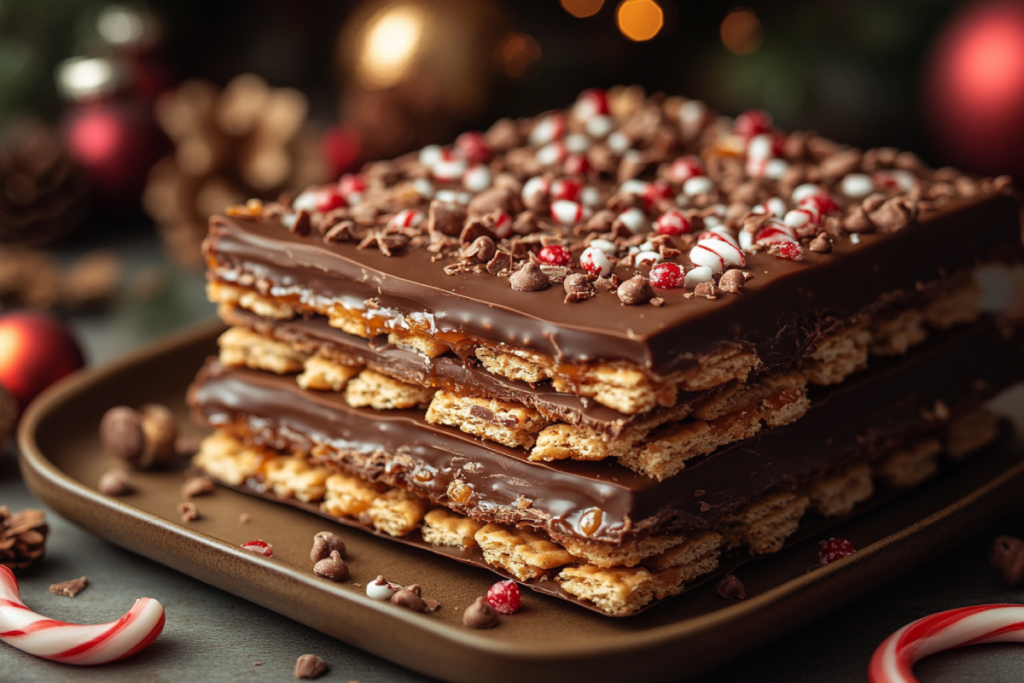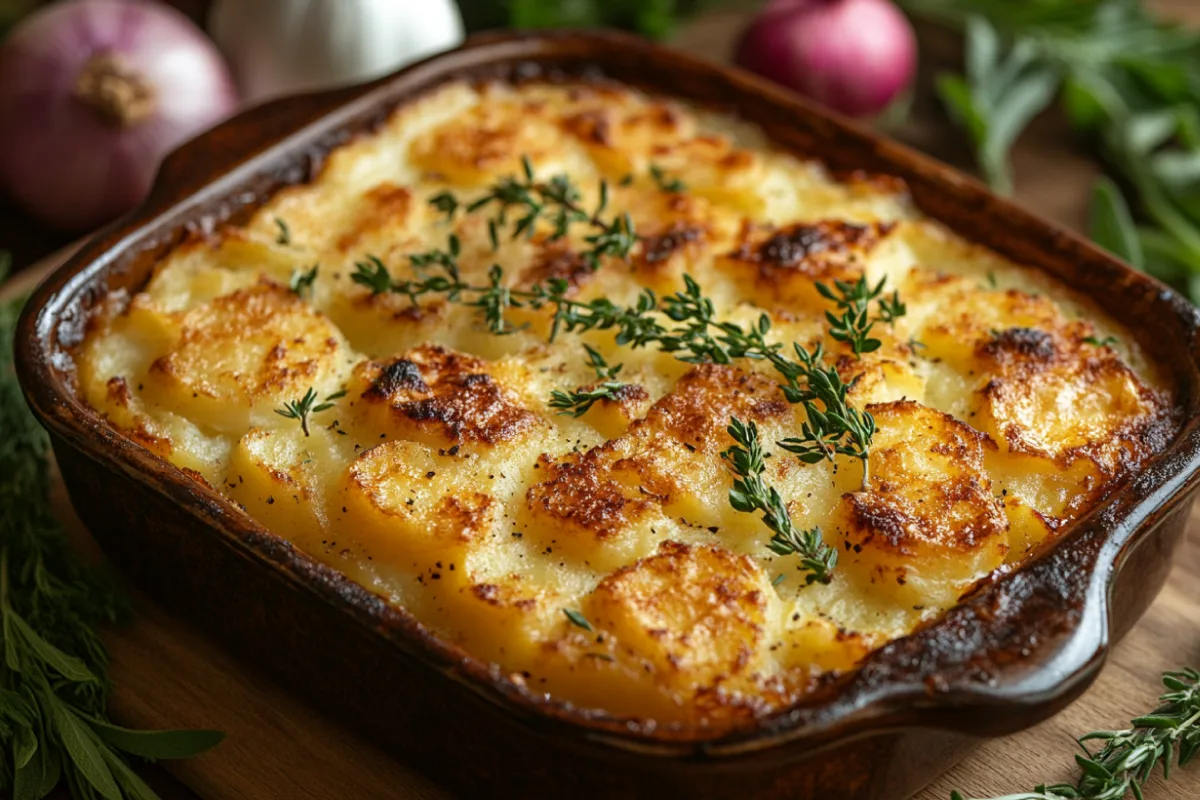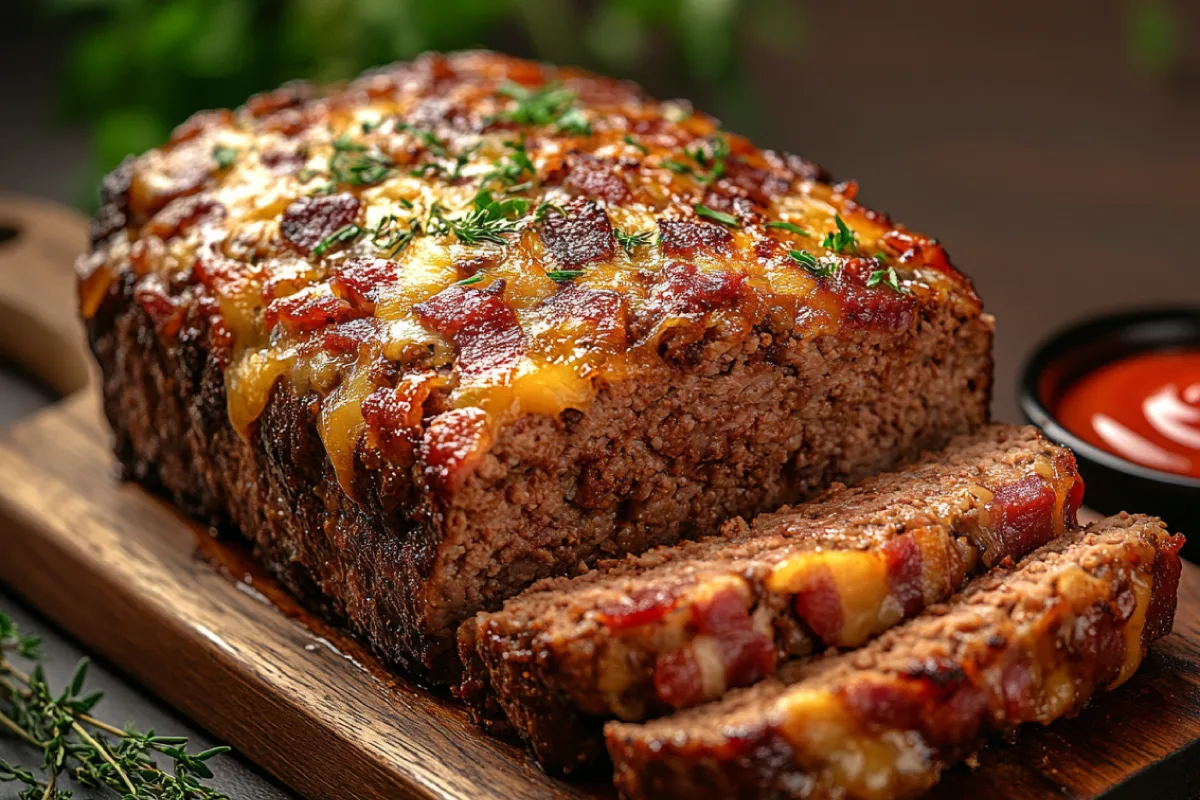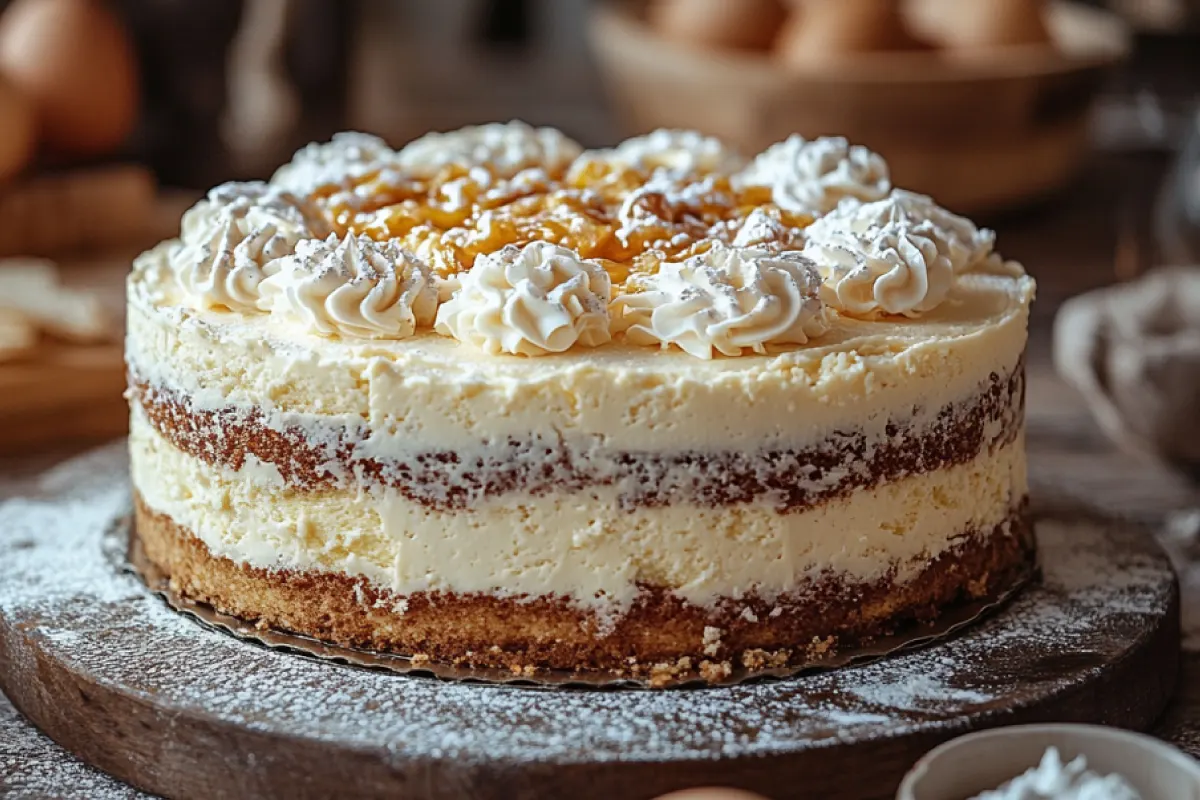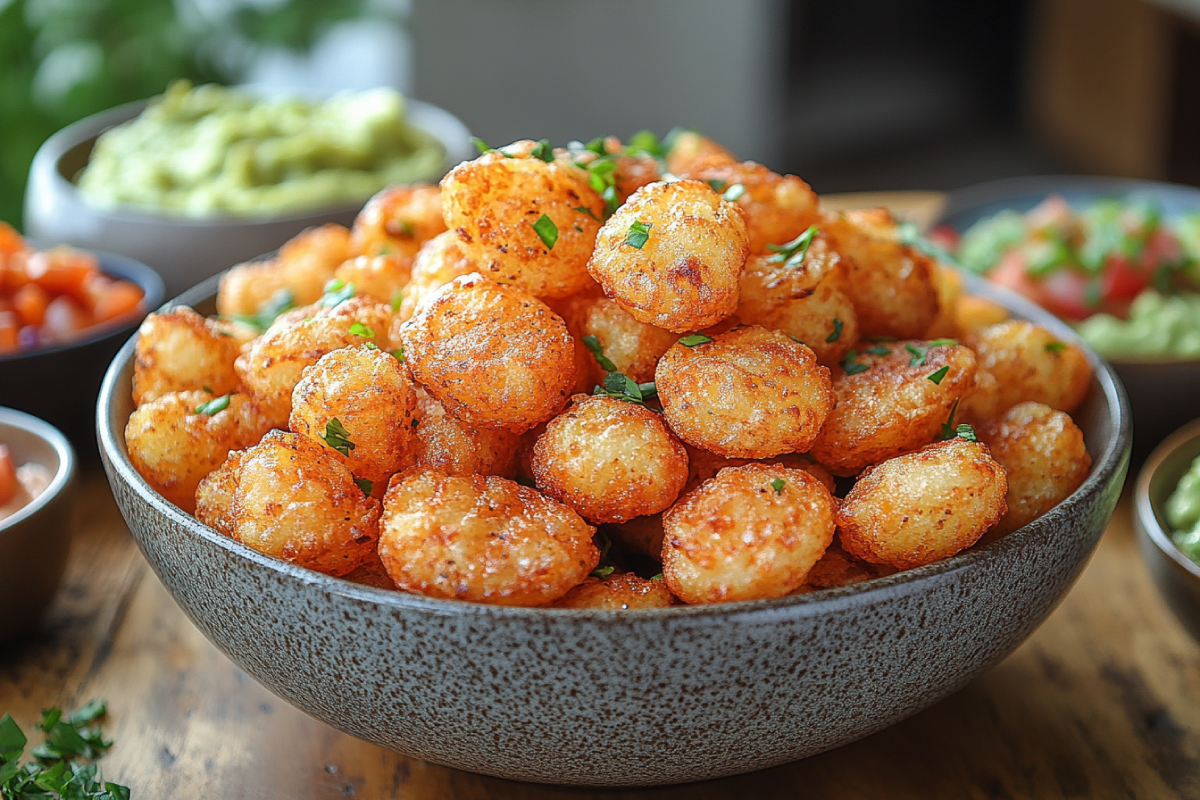Christmas Crack is a beloved holiday treat, but sometimes it doesn’t turn out as perfectly crunchy as you’d hope. If you’ve ever wondered, “Why Is My Christmas Crack Not Crunchy?” you’re not alone. There are several reasons this tasty snack can lose its signature texture. Whether it’s due to undercooked caramel, the wrong type of crackers, or improper storage, understanding the common issues can help you troubleshoot and perfect your batch. Let’s dive into the key factors that may be affecting the crunchiness of your Christmas Crack and how to fix them for the ultimate holiday treat.
Understanding Christmas Crack
What Is Christmas Crack and Why Should It Be Crunchy?
Christmas Crack is a holiday favorite made by layering saltine crackers with caramelized butter and sugar, then topping it with melted chocolate. Once baked, the mixture hardens into a candy-like consistency that can be broken into delicious pieces.
A crunchy texture is crucial to the treat’s appeal. When the texture turns soft or chewy, it’s often a sign of issues during cooking or storage. For more tips on perfecting the texture, check out Why Is My Christmas Crack Chewy?
Why Is Crunchiness Important in Christmas Crack?
Crunchiness isn’t just a preference—it’s a defining feature of successful Christmas Crack. The crisp texture creates the signature “snap” that makes this treat so satisfying.
Why Crunch Matters:
- Textural Contrast: A crunchy base pairs beautifully with the smooth, creamy chocolate.
- Freshness Indicator: Crispness suggests proper cooking and storage.
- Tradition: A crunchy Christmas Crack brings back memories of perfectly made holiday treats.
Crunchy vs. Chewy – What’s the Difference?
To understand why your Christmas Crack isn’t crunchy, it’s important to know the key differences between crunchy and chewy versions.
| Feature | Crunchy Christmas Crack | Chewy Christmas Crack |
|---|---|---|
| Caramelization Level | Fully caramelized and hard-set. | Undercooked or sticky. |
| Moisture Content | Low moisture ensures crispness. | High moisture makes it soft. |
| Storage Conditions | Airtight storage preserves texture. | Exposure to humidity causes sogginess. |
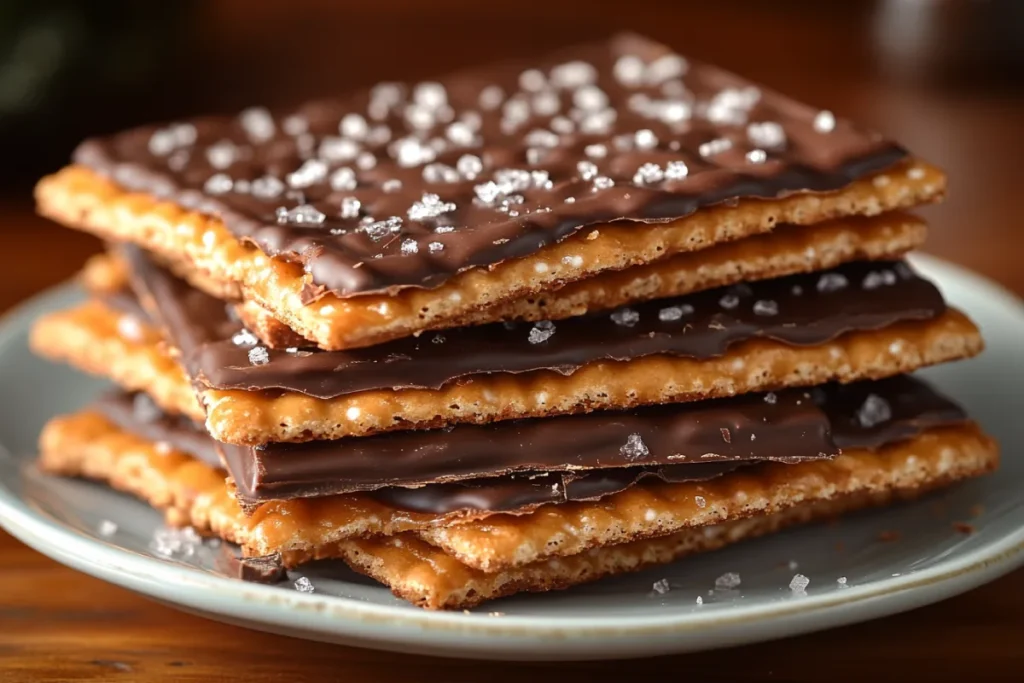
Why Christmas Crack Turns Soft or Chewy
Several factors can affect the texture of your Christmas Crack. Let’s examine the common culprits and how they impact the crunch factor.
Ingredient Issues That Ruin Crunchy Christmas Crack
- Low-Quality Crackers:
Stale or thin saltine crackers absorb too much moisture, leading to a soggy base.
Solution: Always use fresh, sturdy crackers and test their crispness before starting. - Improper Butter-to-Sugar Ratio:
Too much butter in the caramel can make it greasy and prevent it from setting properly.
Solution: Follow a proven recipe and measure your ingredients precisely.
Explore more on this in our guide, Why Did My Christmas Crack Not Get Hard?
How Caramelization Affects the Texture of Christmas Crack
- Undercooked Caramel:
Caramel must reach 300°F (the “hard crack” stage) to harden correctly.
Solution: Use a candy thermometer to ensure the correct temperature. - Overcooked Caramel:
Overcooking caramel causes burning, leading to brittle or bitter results.
Solution: Monitor the caramel carefully, stirring continuously to avoid burning.
Environmental Factors That Make Christmas Crack Chewy
- Humidity:
Moisture in the air can soften caramel and crackers.
Solution: Avoid making Christmas Crack on humid days or use a dehumidifier in the kitchen. - Improper Cooling:
If the treat isn’t allowed to cool completely, the caramel may not set properly.
Solution: Let it cool fully at room temperature or refrigerate for consistent results.
Storage Mistakes That Soften Christmas Crack
- Exposure to Air:
Leaving Christmas Crack in a non-airtight container allows moisture to seep in.
Solution: Store in an airtight container, separating layers with parchment paper for protection. - Refrigeration or Freezing Errors:
Condensation from refrigeration or freezing can make the treat soggy.
Solution: Seal it tightly before refrigerating or freezing.
Step-by-Step Troubleshooting
To fix texture issues in Christmas Crack, follow this troubleshooting guide.
How to Adjust Ingredients for Crunchy Christmas Crack
- Check the Crackers: Use fresh saltines or bake stale ones at 200°F to restore crispness.
- Choose the Right Butter and Sugar: Use high-fat butter and granulated sugar for reliable caramelization.
For creative variations, try Christmas Crack Cookies Recipe – Festive, Easy, and Irresistibly Delicious.
Perfecting Caramel for the Best Texture
- Measure Precisely: Use equal parts butter and sugar, as small deviations can ruin the consistency.
- Cook Correctly: Heat the caramel to 300°F and stir continuously to avoid hot spots.
Baking and Cooling Tips for Crisp Christmas Crack
- Bake at the Right Temperature: Stick to 375°F for 5–7 minutes to integrate the layers.
- Cool Completely: Use parchment paper or silicone mats, and avoid metal pans to ensure even cooling.
For more creative ideas, check out Crock Pot Christmas Crack – The Ultimate Holiday Treat.
Storing Christmas Crack to Maintain Crunchiness
- Use Airtight Containers: Prevent exposure to air and separate layers with parchment paper.
- Avoid Humidity: Store in a cool, dry place or refrigerate in a tightly sealed container.
Expert Tips for the Perfect Crunch
- Choose High-Quality Ingredients: Fresh saltine crackers, unsalted butter, and granulated sugar are key.
- Cook with Precision: Use a thermometer for caramel and follow proven recipes.
- Experiment with Toppings: Add nuts, crushed candy canes, or pretzels for extra crunch.
For fun variations, try Christmas Crack Cookies with Graham Crackers.
Why Is My Christmas Crack Not Crunchy? A Deep Dive into Texture Troubles
Christmas Crack is a holiday favorite, cherished for its irresistible crunchy texture. However, there are moments when this treat doesn’t quite turn out as expected. If you’ve found yourself asking, “Why is my Christmas Crack not crunchy?” then you’re not alone. Let’s explore why this might be happening and how you can fix it for the next batch.
Understanding Why Your Christmas Crack Isn’t Crunchy
The first step in solving the problem is understanding why your Christmas Crack might lose its signature crunch. Crunchiness plays a key role in creating that delightful texture contrast, making it a defining feature of this treat. If it’s not crunchy, it’s usually due to a combination of ingredients, cooking methods, and storage mistakes.
Common Causes of Soft Christmas Crack
- Under- or Overcooked Caramel: One of the most common reasons Christmas Crack is soft is undercooked caramel. The caramel needs to reach a temperature of 300°F to harden properly. If it doesn’t, the mixture may remain too soft or sticky. On the other hand, overcooking caramel can result in a burnt flavor and a brittle texture, neither of which is desirable.
- Improper Storage Conditions: If your Christmas Crack is stored improperly, it can lose its crispiness. Exposure to moisture—whether from humidity in the air or condensation from refrigeration—can cause the treat to soften. It’s essential to store Christmas Crack in an airtight container to maintain that satisfying crunch.
- Using the Wrong Type of Crackers: The quality of the crackers used in Christmas Crack is crucial. Thin or stale saltine crackers can absorb moisture too easily, which makes them soggy. Opt for fresh, sturdy crackers that won’t become limp and soggy under the caramel and chocolate layers.
Why Is My Christmas Crack Not Crunchy? Ingredient and Cooking Factors
Ingredient Issues That Affect Texture
- Saltine Crackers: One of the key ingredients in Christmas Crack is the humble saltine cracker. But not all saltines are created equal. Thin crackers or stale crackers can ruin the entire batch by becoming soggy under the caramel. This could be a major reason why your Christmas Crack isn’t crunchy. Always check the freshness of your crackers before starting.
- Butter-to-Sugar Ratio: Too much butter or sugar can cause the caramel to become greasy, which prevents it from setting properly. If the caramel doesn’t harden to the correct texture, it will affect the overall crunch of the treat. Stick to the right proportions to ensure the caramel forms the perfect layer on top of the crackers.
Cooking and Caramelization Techniques
- Cooking the Caramel: To make your Christmas Crack crunchy, it’s important to cook the caramel to the right consistency. If the caramel doesn’t reach 300°F (also known as the “hard crack” stage), it will not firm up properly. This results in a chewy, soft texture instead of the desired crunch. Always use a candy thermometer to get the caramel to the correct temperature.
- Perfecting the Bake: Once you have assembled your Christmas Crack, it’s time to bake it. The key here is to bake it at the right temperature for the right amount of time—375°F for 5 to 7 minutes is ideal. Overbaking or underbaking can both impact the final texture.
- Cooling and Setting: After baking, cooling the Christmas Crack properly is essential to achieving the crunch. If you rush this step, the caramel might remain too soft. Let the treat cool completely, ideally at room temperature or in the fridge. This will allow the caramel to firm up and the crackers to set, ensuring you get that satisfying crunch when you break the candy into pieces.
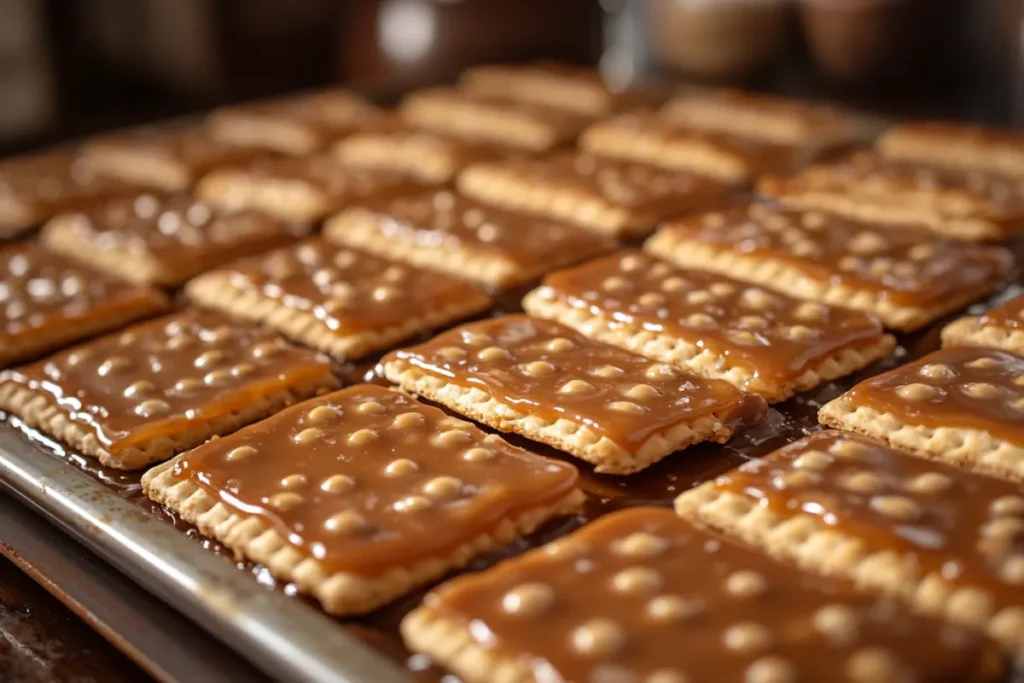
Environmental Factors That Could Be Affecting Your Christmas Crack’s Crunch
Humidity and Weather Conditions
Christmas Crack is a treat best made on dry days. High humidity can soften the caramel, causing it to lose its crunch. If you live in a particularly humid area, it might be best to make your Christmas Crack on days when the air is dry. If you can’t control the weather, using a dehumidifier in the kitchen may help keep your Christmas Crack crispy.
Refrigeration and Freezing Mistakes
Storing your Christmas Crack in the refrigerator or freezer can be tricky. While refrigeration might seem like a good idea to keep the treat fresh, condensation from the fridge can cause moisture to settle on the surface, leading to a soggy, soft texture. If you do refrigerate it, make sure to place it in a sealed airtight container to prevent moisture buildup. For longer storage, freezing in layers of parchment paper is a good option, as long as the container is airtight.
How to Troubleshoot Soft Christmas Crack
If you’ve already made a batch and find it’s not as crunchy as you hoped, don’t despair. Here’s how to troubleshoot and make adjustments.
Re-bake the Caramel
If the caramel didn’t cook long enough and your Christmas Crack isn’t crunchy, you can re-bake it to fix the issue. Place it back in the oven at a low temperature—about 200°F—to allow the caramel to cook more evenly. Watch it carefully to ensure it doesn’t burn. Once it reaches the right consistency, let it cool fully before breaking it into pieces.
Adjusting the Butter-to-Sugar Ratio
Sometimes, the reason your Christmas Crack is soft is due to the caramel being too greasy or too sweet. To fix this, you can experiment with the butter-to-sugar ratio by reducing the amount of butter or adding a bit more sugar. The correct balance will ensure the caramel sets to the perfect crunchiness.
Bake the Crackers to Restore Crispness
If you suspect your crackers are stale or not crispy enough, you can easily revive them. Place them in the oven at 200°F for about 10 minutes to dry them out and restore their crispness before assembling your Christmas Crack.
Storing Christmas Crack to Maintain Its Crunch
Proper storage is key to keeping your Christmas Crack crunchy. Here are some tips for long-lasting crispness:
- Airtight Containers: Always store your Christmas Crack in an airtight container to keep moisture out. If you have large batches, consider separating layers with parchment paper to prevent the pieces from sticking together.
- Avoiding Humidity: As mentioned earlier, moisture is the enemy of crunchy Christmas Crack. To protect it, store it in a cool, dry place away from direct sunlight. If you choose to refrigerate it, be sure it’s tightly sealed to avoid condensation.
- Freezing for Longer Storage: Christmas Crack can be frozen, but you’ll need to store it in layers with parchment paper to prevent the pieces from sticking together. Ensure the container is airtight before freezing to avoid moisture buildup.
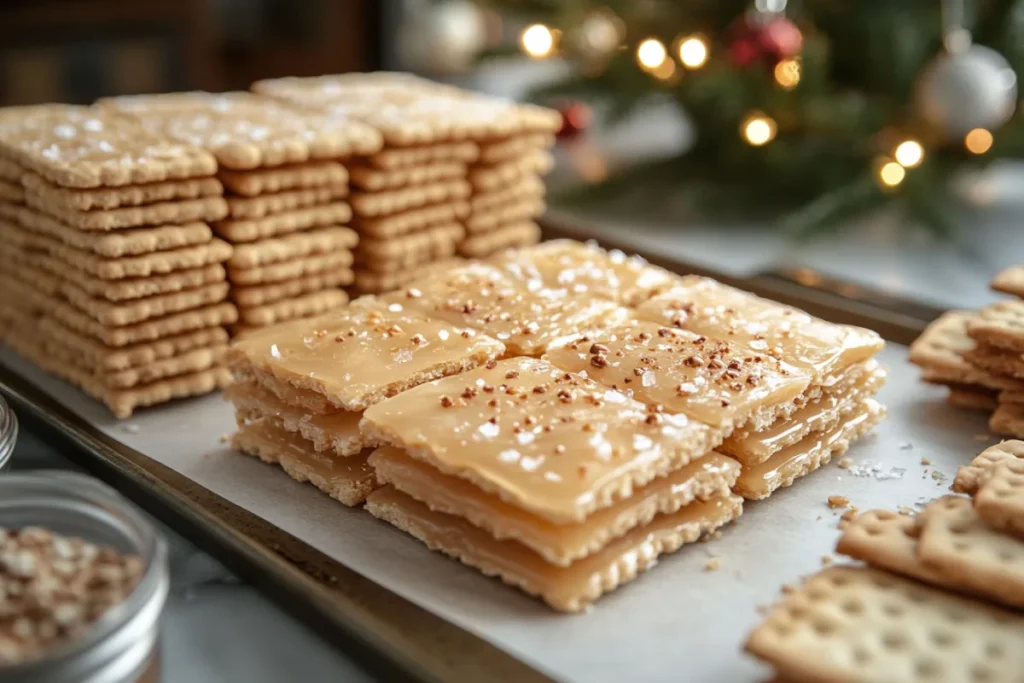
Expert Tips for Making Perfectly Crunchy Christmas Crack
To make sure your next batch of Christmas Crack turns out perfectly crunchy, consider these expert tips:
- Use Quality Ingredients: High-quality ingredients like fresh saltine crackers, unsalted butter, and granulated sugar will help ensure the best texture. The better the ingredients, the better your Christmas Crack will turn out.
- Cook with Precision: Use a candy thermometer to measure the temperature of your caramel. The right temperature is key to achieving the perfect texture, and a thermometer is your best tool for getting it just right.
- Experiment with Toppings: For an extra layer of crunch, consider adding toppings like crushed pretzels, nuts, or crushed candy canes. These additions not only enhance the flavor but also increase the crunch factor of your Christmas Crack.
- Stay Consistent: Follow the recipe closely and make sure to maintain consistent cooking times and temperatures. Small deviations from the recipe can lead to textural issues.
Why Is My Christmas Crack Not Crunchy? Solutions Recap
In summary, if your Christmas Crack isn’t crunchy, it’s likely due to one or more of the following factors: undercooked caramel, improper storage, the wrong type of crackers, or environmental conditions. To fix these issues, you can adjust your ingredients, baking technique, and storage methods.
By paying attention to the details—such as caramel temperature, cracker quality, and humidity control—you’ll be able to create the perfect, crunchy Christmas Crack every time. So the next time you find yourself wondering, “Why is my Christmas Crack not crunchy?” you’ll have the knowledge to fix it and enjoy the perfect holiday treat.
Troubleshooting Christmas Crack: Ensuring Crunch with Every Batch
If your Christmas Crack continues to fall short of the desired crunchiness, don’t be discouraged. There are several more steps you can take to troubleshoot and perfect the recipe.
Check Your Cooking Equipment
The tools you use in cooking can significantly impact the texture of your Christmas Crack. A heavy-bottomed saucepan is ideal for making caramel, as it helps distribute heat evenly and prevents burning. Additionally, an accurate candy thermometer is crucial for monitoring the caramel’s temperature. Without one, it’s easy to miss the hard crack stage, which is essential for that crunchiness.
Adjusting Baking Time
If you’ve made several batches and still find that your Christmas Crack isn’t as crunchy as you’d like, you might need to tweak the baking time. A few extra minutes in the oven can sometimes be the key to achieving the perfect crispness. However, be cautious not to overbake the caramel, as this could lead to a burnt taste and a brittle texture.
Adding More Crunch
If your Christmas Crack is still not crunchy enough, consider adding a bit more texture. Crushed pretzels, nuts, or even a sprinkle of sea salt can provide additional crunch, enhancing both the flavor and the texture of your holiday treat.
FAQs
Why Didn’t My Christmas Crack Harden Properly?
Undercooked caramel is the most common reason. Ensure it reaches the correct temperature (300°F).
How Do I Fix Soft Christmas Crack?
Re-bake the caramel layer for a few minutes and allow it to cool completely.
What’s the Best Way to Store Christmas Crack?
Store in an airtight container at room temperature for up to two weeks or freeze it in sealed layers.
Table of Contents
Conclusion
Crunchy Christmas Crack is a holiday staple, but getting the texture right requires attention to detail. By following these tips for cooking, cooling, and storing, you’ll enjoy perfect results every time. For more inspiration, explore What Is the Number One Christmas Cookie?.
Happy baking, and may your Christmas Crack always have that perfect snap!

